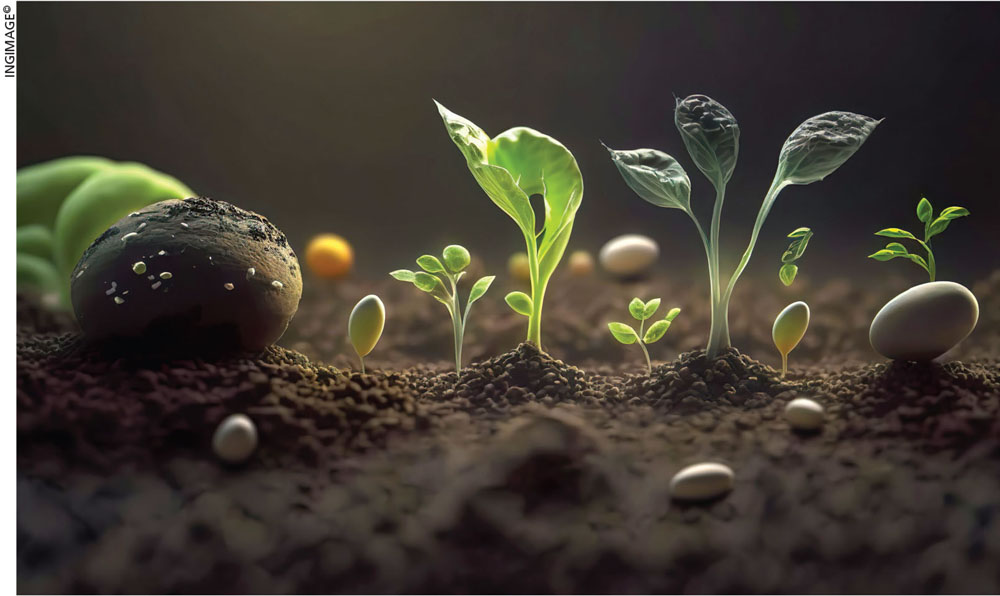AGRICULTURE SECTOR
SMALLHOLDER DIVERSIFICATION
Akila Wijerathna weighs the pros and cons of crop variation for local farmers
Smallholder farmers play an important role in ensuring global food security as they produce around a third of the world’s food supply. They face many challenges however, which limits the ability to improve their livelihoods and contribute to sustainable food systems.
One of the main challenges is that most farmers cultivate the same crops – and this involves cultivating a single crop for maximal yield and profit. This approach can leave farmers vulnerable to market fluctuations and environmental shocks, such as droughts, floods and pests.
They are particularly vulnerable to climatic and economic shocks – with many living from one harvest to the next – so poor harvests or sudden price reductions can have catastrophic effects.
Diversification is crucial to addressing these challenges and involves growing multiple crops, raising livestock and incorporating agroforestry practices, to create more resilient and sustainable farming systems.
It has many benefits including increasing farmers’ income, ensuring food security, and the improvement of environmental factors such as soil health, pest management and carbon sequestration.
Agricultural diversification is a significant driver of economic growth but its success depends on the availability of opportunities and farmers’ ability to respond. It can be facilitated by various factors such as technological advancements, changes in consumer demand or government policies, and the development of infrastructure such as irrigation and roads.
However, diversification can also be impeded by market and price risks, poor crop management practices, and competing socioeconomic priorities such as employment generation, self-sufficiency and foreign exchange earning capacity for specific crops.
It is a crucial aspect of agro-ecological transition that can bring a range of benefits including risk reduction, improved soil fertility, optimised productivity, alternative income sources and better diets.
Studies have shown that agro-ecological diversification can enhance farmers’ resilience to various shocks such as price declines and long-term droughts.
The level of crop diversification is positively influenced by factors like farm size, livestock ownership, access to credit and extension services, and the use of crop rotation practices. But market group membership has a negative association with crop diversification.
Diversifying agricultural production at the farm level can improve resilience and nutrition outcomes up to a point. But diversification at the community, landscape and national levels is crucial for agro-ecosystem resilience, and nutritional diversity.
On farm diversification can provide households and local markets with a greater variety of food, reduce production risks, have better nutrition outcomes, and increase resilience to environmental and economic disruptions.
However, diversified production of various commodities at the landscape level can create a diversified food system at the national level. This is often due to the diverse geographical areas within a country, heterogeneity of actors and various value chain activities.
While individual farms and value chains benefit from specialisation – in terms of improved productivity, competitiveness, efficiency and economies of scale – the diversity of actors, farm production and value chain activities at the community, landscape and national levels can provide access to diverse nutritious food produce, income streams and employment opportunities.
Farmers commonly diversify their production – both on and off farms – to manage risks associated with agriculture better.
On farm diversification, particularly when combined with livestock production, can increase the ability of both farmers and agro-ecosystems to withstand shocks by providing a variety of crops that have different levels of susceptibility and response mechanisms to shocks, and provide food for household consumption or sale throughout the year.
On the contrary, excessive on farm diversification can also limit the potential benefits of economies of scale, and expose households to fresh risks associated with adopting new varieties and breeds.
Off farm diversification involves allocating labour to other income generating activities that have different risk profiles, providing additional income and reducing income volatility during times of hardship.
Specialising in fewer commodities can also improve welfare by improving productivity and competitiveness through greater efficiency and economies of scale, leading to increased income.
The potential benefits of crop diversification in improving the resilience of food systems need to be weighed against the cost of production.
Policy makers should consider policies that reduce farmers’ financial burdens and improve their liquidity to promote crop diversification successfully as a climate smart agricultural practice among smallholder farmers.



